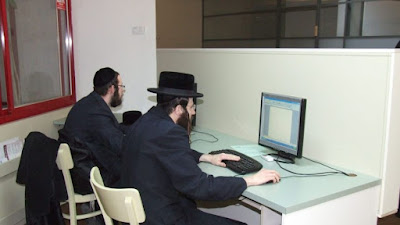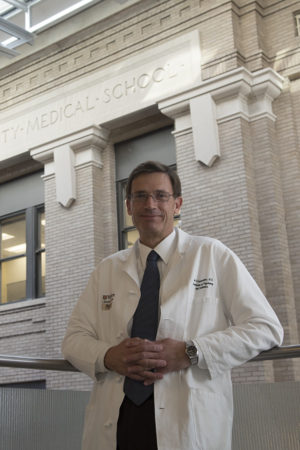
Jews, is the first large-scale survey done among this fledgling Jewish community segment.
As Mark Trencher, Nishma president and the study’s lead researcher, commented: “The goal of this survey was to give this group a voice. We wanted to better understand the experiences of those who have transitioned away from their Orthodox community of origin, or who are grappling with the related issues. The response was very enthusiastic, and many respondents provided deeply personal and poignant insights into their journey, practices, beliefs, identity, community and relationships.”
Professor Steven M. Cohen of Hebrew Union College-Jewish Institute of Religion, who served on the study’s advisory committee (comprised of Jewish world academics, researchers and providers of services to the OTD), noted: “We live in an age of enormous religious fluidity. Among Jews, the Haredi population is booming, and several studies have been done of ba’alei teshuva – Jews who move from non-Orthodox to Orthodoxy. But there is little research, if any, on Jews who have left Orthodoxy. This study is therefore timely and particularly significant if we are to understand the future of Orthodoxy and American Jewry.”
Among the study findings:
- More people feel they have been “PUSHED Off the Derech,” rather than “PULLED Off the Derech.” Asked why they left, more people cited internal conditions – such as the status of women, perceptions of hypocrisy – that pushed them out, than cited reasons related to the lure of the outside world.
- It’s hard to keep the outside world at bay; but the internet is not cited as a significant factor. Outside knowledge – obtained by reading, personal interactions or otherwise learning things (science, philosophy, Biblical criticism, etc.) that contradicted prior beliefs – has been influential. And while the Haredi community is fearful of the danger of the internet, only 2% named it as a factor in why they left.
- The status of women is a significant factor. The status of women was among the most widely cited reasons for leaving Orthodoxy. It was the top reason among Modern Orthodox and the top reason among all women. Indeed, among Modern Orthodox women, 37% cited this as a reason why they left Orthodoxy.
- Weak secular education is not a major reason for leaving. While there has been some criticism of the weak secular education in Haredi communities, only 2% mentioned it as a reason why they left.
- Almost all remain Jewish … as they define it. 95% view themselves as Jewish, with the majority (60%) labeling themselves as culturally Jewish, traditional, secular/humanist Jewish or “just Jewish.” Very few labeled themselves as belonging to any of the typical Jewish world denominations.
- But are they Jewish in practice? While few (21%) said they believe in God, the percentages that said they keep kosher (31%), light Sabbath candles (53%), have a sense of belonging to the Jewish people (61%) or an attachment to Israel (66%) are comparable to the percentages among all U.S. Jews.
- The formerly Modern Orthodox retain more traditional practices and beliefs than the formerly Haredi. For example, 78% of the formerly Modern Orthodox said being Jewish is important to them, compared to 57% of the formerly Haredi, and this discrepancy appeared across a range of practices and beliefs.
- While there is widespread rejection by families, there is also some growing acceptance over time. Respondents stated that most of their families do not understand their decisions in leaving Orthodoxy. But the percentage of family that understands grew from 15% when they left, to over 40% after 10 years.
- With their families, women have it worse. Leaving the community is tougher on women. There is a 15 percentage point difference between men and women in terms of having a positive relationship with parents and siblings after they leave, with women at the short end of the stick.
- Community connections are weak. Fewer than half feel connected to any type of Jewish community, and a majority (54%) says they feel something is missing from their community connections.
- The biggest needs are in areas of socializing. Those leaving their communities face challenges. The most often cited needs are in socializing (43%), dating and relationships (24%), and employment (21%).
- What about the “Double-Lifers”? One-third (33%) of respondents said they had left their Orthodox community in terms of their beliefs and private behaviors but have done so covertly. Still residing in the community, they are sometimes referred to as “double-lifers.” They are not ready to emerge publicly and may never do so – although 39% said it is likely they will leave the community in the future.
- How many Haredi OTD’ers are there? There are no hard data points here. While some have speculated there are 4,000 Haredi OTD’ers in the Greater NY area, it may well be much higher. For example, our 655 Haredi respondents indicated they knew an average of 9.2 of their close peers who have gone OTD or are likely to do so. Thus, we’re already talking about many thousands of people, and this is just from our respondents. Lacking hard data, we feel comfortable estimating the segment as likely well into the “5-digits” (10,000+).
The complete summary report, “Starting a Conversation: A Pioneering Survey of Those Who Have Left the Orthodox Community” is available here.
http://ejewishphilanthropy.com/first-large-scale-survey-explores-motives-and-experiences-of-formerly-orthodox/?utm_source=Sunday+June+26%2C+2016&utm_campaign=Sun+June+26&utm_medium=email











 Rabbi
Meir Pogrow is the founder of the unique Master Torah learning system.
Currently, Rav Pogrow offers over 6000 shiurim on the mastertorah.com
website, and new shiurim are added daily!
Rabbi
Meir Pogrow is the founder of the unique Master Torah learning system.
Currently, Rav Pogrow offers over 6000 shiurim on the mastertorah.com
website, and new shiurim are added daily!














